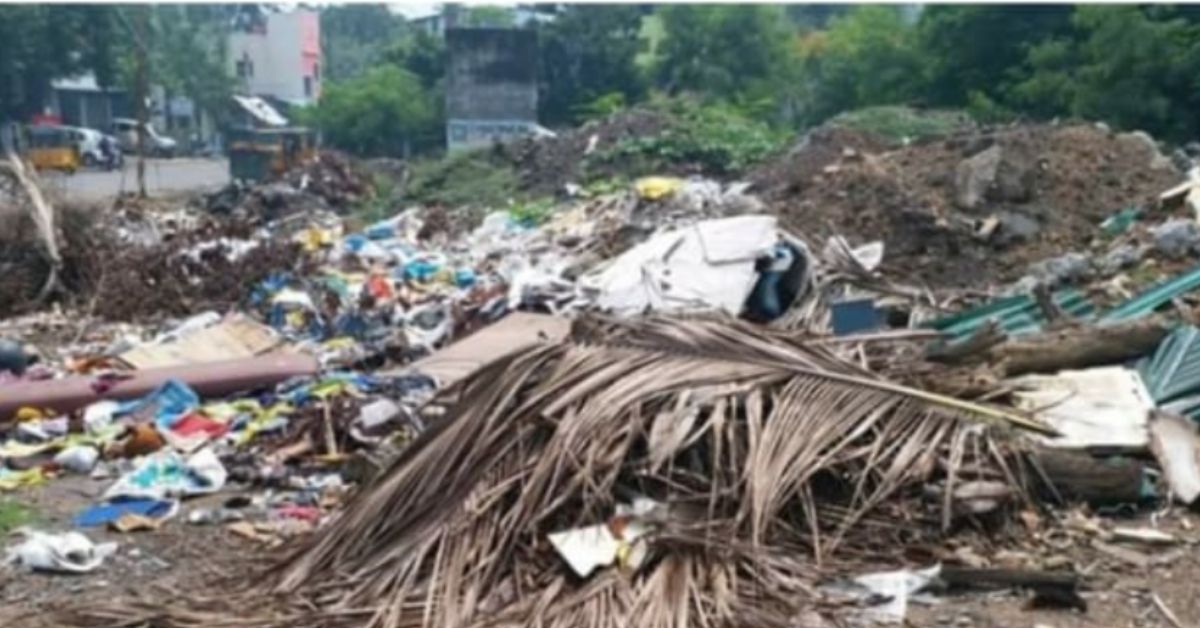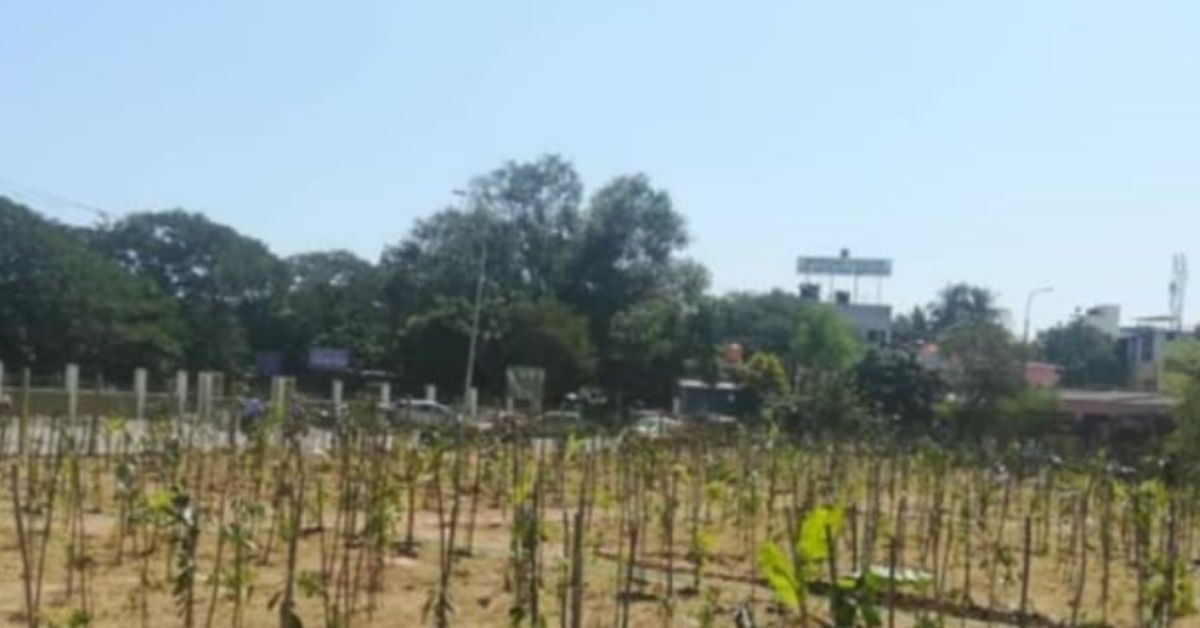Nestled away, amid the concrete jungle in Kotturpuram district, Chennai, lies a mini-forest of teak and mahua trees that is home to birds and a flutter of butterflies. For many years, however, this 23,000-sq-ft land was a sight for sore eyes until recently when Dr Alby John Varghese, Regional Deputy Commissioner (South Region) of the Greater Chennai Corporation, along with his team decided to create a Miyawaki forest.
The Miyawaki Way
The site at Kotturpuram, which lies on the southern banks of the River Adyar, had been plagued with construction debris and household waste that was a result of illegal dumping that had been going on for over 15 years. The site had become a thorn in the side of the Greater Chennai Corporation with complaints pouring in almost every fortnight.
IAS Deputy Commissioner, Alby John says, “We kept clearing the waste but due to the space being easily accessible there was rampant dumping of waste which would pile up again within a month.”

To break this cycle, the Chennai Corporation decided to transform the land. Initially, the corporation planned to go ahead with a plantation however after experts were consulted they found that the land was unfit for cultivation as there was a pile of around 3 to 4 feet high of concrete debris dumped on it. It was then that officer Alby suggested the idea of a Miyawaki forest.
The Miyawaki method is an afforestation technique named after the Japanese botanist Akira Miyawaki who pioneered this technique. This method, also known as the Potted Seedling Method, involves planting native vegetation close to each other to create dense multilayered forests. This approach ensures that plant growth is 10 times faster and 30 times denser than a usual plantation. The biggest advantage of this method is that the forest becomes maintenance-free after the first three years and becomes a self-sustaining ecosystem.
Having had prior knowledge of the Miyawaki method at his previous posting in Tuticorin, Tamil Nadu, Alby spearheaded the initiative at Kotturpuram. He highlights the three most important features of the method saying, “The three pillars of the Miyawaki method are; firstly, preparing the soil by excavating it and ensuring it is mixed with manure. The second is to plant densely so that the trees grow upwards and not branch out. The final step is to plant only native trees. These are the crucial elements of the method.”
The entire initiative took three months from its inception in November 2019. Around 2,000 metric tonnes of concrete debris were removed and new soil that was mixed with organic manure was transported to the site. In January 2020, along with the help of NGOs and community members, 2,020 indigenous varieties of seedlings were planted at a cost of around Rs 15 lakhs, laying the foundation for the first Miyawaki forest in Chennai.
Within five months, the seeds of their effort bore fruit as the forest grew rapidly.

The Kotturpuram project has had two major impacts, one has been to increase the green cover in the region as many new species of flora and fauna can now be found and the other being to inspire others to take up similar initiatives. The forest has also helped bring down the heat island effect, says Alby. The heat island effect is an urban area or metropolitan area that is significantly warmer than its surrounding rural areas due to human activities.
30 urban forests, 1,000 more to go
Alby John Varghese, a 2013 batch IAS officer, spent his childhood in a small town in Kerala’s Ernakulam district where his father runs a grocery shop and does agriculture while his mother worked as a nursing assistant at a primary healthcare centre. Growing up he didn’t believe he had what it takes to crack civil service exams and went on to pursue his MBBS from Jubilee Mission Medical College in Thrissur where he was a part of the quizzing team.
During the internship period of his medical studies, two of his quizzing teammates cracked the civil service exam. This gave him the courage to write the exam which he successfully cleared in the first attempt!
“The reason I chose the service was because I thought it gives a better platform to make a change and leave a memorable mark on the planet. I had a chance to do that with this project and I am still trying to do that all the time,” says Alby.
The success of the Miyawaki forest at Kotturpuram inspired the civic body to set up 30 more urban forests across Chennai.
“Seeing the progress of this initiative we decided to scale it up to other areas in the city. Taking inspiration from this project other zones—the North and Central zones—have started taking up this method,” says Alby.

According to Alby, the Kotturpuram project has also brought people forward, especially in Chennai, to take up urban forestry which was one of the main reasons why he had undertaken the initiative. “The idea behind starting this project was to encourage various governments, non-governmental organisations and even corporates to take up these initiatives. It was a good inspiration for the people and even brought urban forestry into pop culture,” says Alby.
As the Miyawaki forest at Kotturpuram turned one year old in February this year the Chennai Corporation has decided to set up as many as 1,000 urban forests across the city and has encouraged resident associations, private firms and NGOs to take the lead on these projects. The corporation also plans to open the forests to the public by creating walkways once the forests are completely developed.
Alby signs off saying, “All of us will have opportunities that come our way and it is for us to find them and do the best possible. Being at the right place at the right time, I had a chance to do that. Now that the project is a success I hope it inspires others to undertake similar projects.”
(Edited by Yoshita Rao)
No comments:
Post a Comment